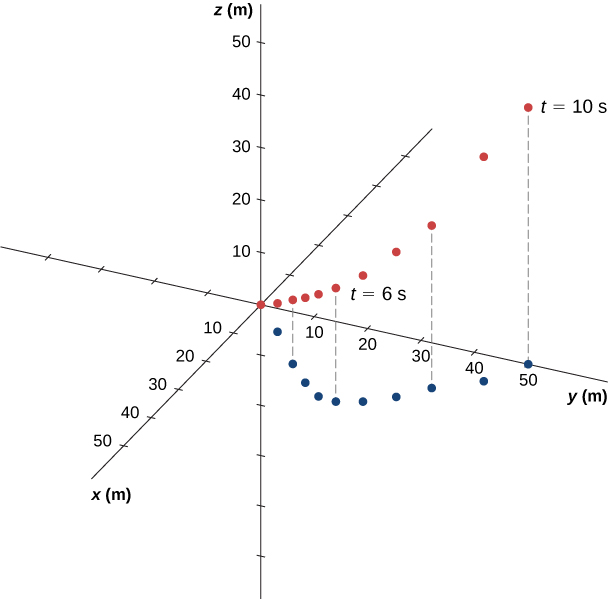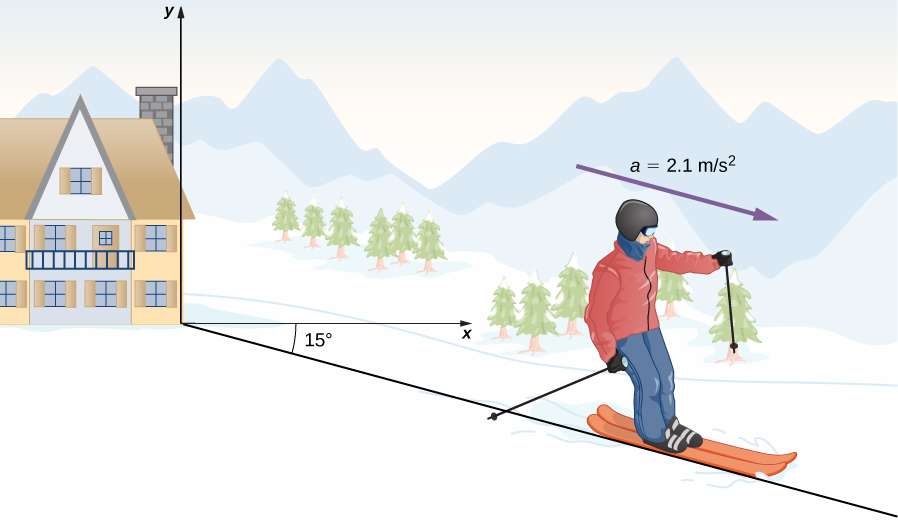| << Chapter < Page | Chapter >> Page > |

Check Your Understanding Suppose the acceleration function has the form where a, b, and c are constants. What can be said about the functional form of the velocity function?
The acceleration vector is constant and doesn’t change with time. If a, b , and c are not zero, then the velocity function must be linear in time. We have since taking the derivative of the velocity function produces If any of the components of the acceleration are zero, then that component of the velocity would be a constant.
Multidimensional motion with constant acceleration can be treated the same way as shown in the previous chapter for one-dimensional motion. Earlier we showed that three-dimensional motion is equivalent to three one-dimensional motions, each along an axis perpendicular to the others. To develop the relevant equations in each direction, let’s consider the two-dimensional problem of a particle moving in the xy plane with constant acceleration, ignoring the z -component for the moment. The acceleration vector is
Each component of the motion has a separate set of equations similar to [link] – [link] of the previous chapter on one-dimensional motion. We show only the equations for position and velocity in the x - and y -directions. A similar set of kinematic equations could be written for motion in the z -direction:
Here the subscript 0 denotes the initial position or velocity. [link] to [link] can be substituted into [link] and [link] without the z -component to obtain the position vector and velocity vector as a function of time in two dimensions:
The following example illustrates a practical use of the kinematic equations in two dimensions.
and
(a) What are the x- and y -components of the skier’s position and velocity as functions of time? (b) What are her position and velocity at t = 10.0 s?


Notification Switch
Would you like to follow the 'University physics volume 1' conversation and receive update notifications?